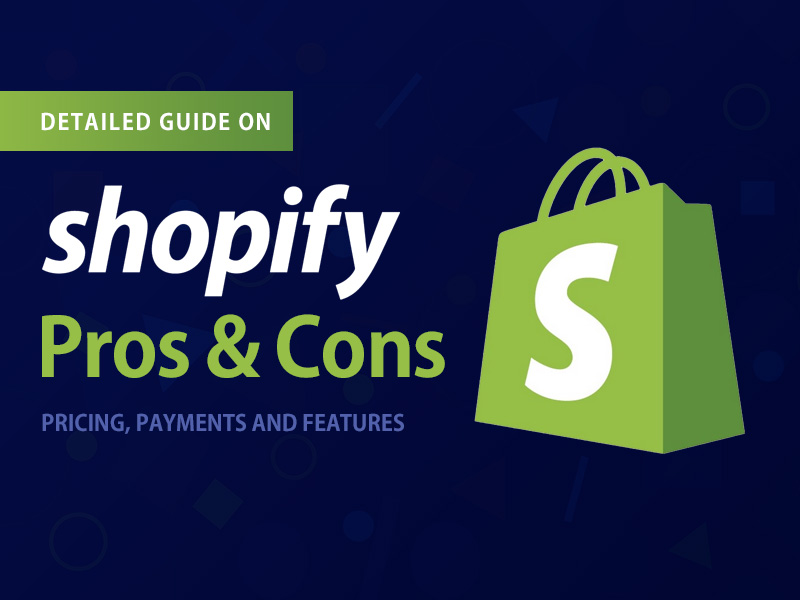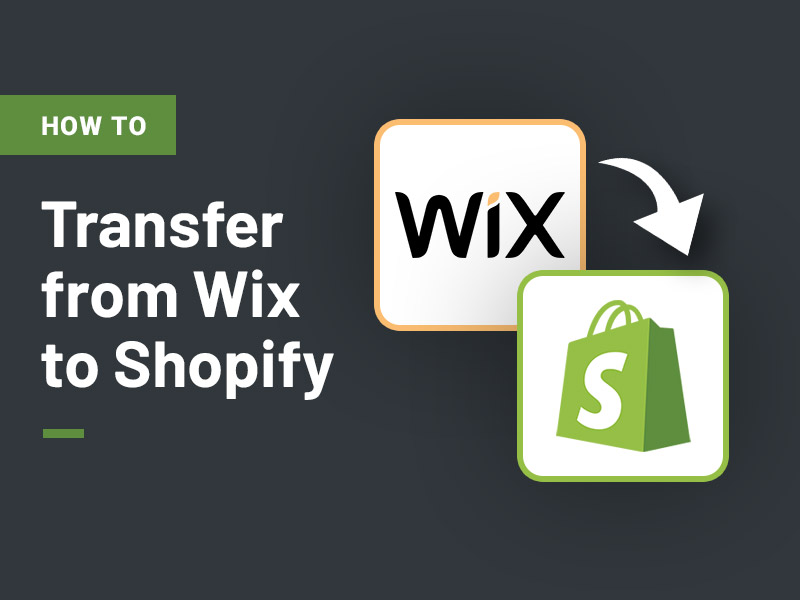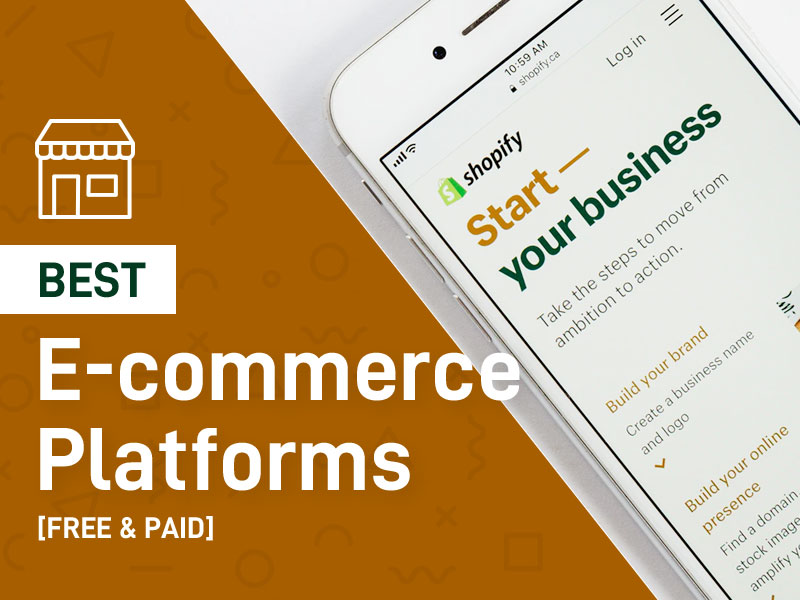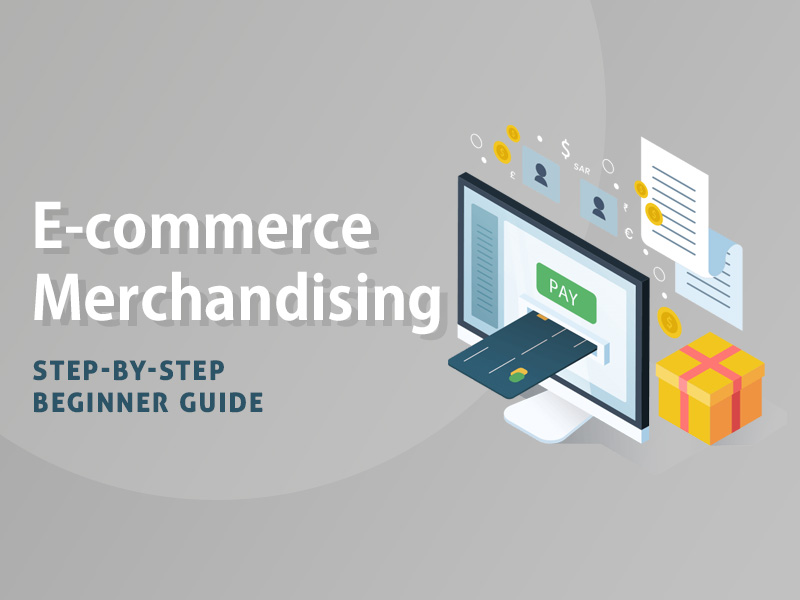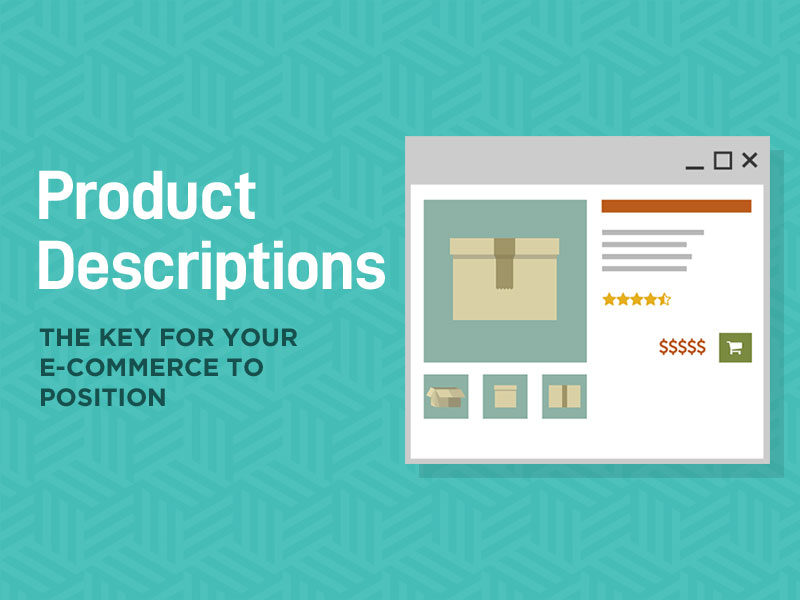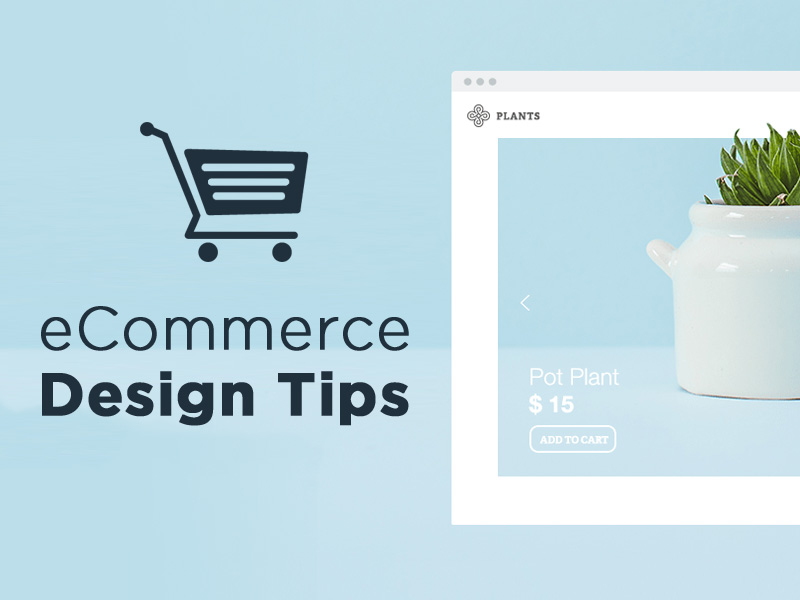Ecommerce has been one of the defining trends in the 21st century. It just took a few people to prove that you could conveniently buy from an online store in the early ’90s. The idea caught on over the next few decades, and the industry has grown ever since then.
However, the eCommerce industry has witnessed rapid developments along the way. If you’re looking to begin your eCommerce business, there are several factors you’ll need to put in place, like the correct payment processors and shipping options for your customers. Unfortunately, it isn’t easy to handle these variables manually.
Shopify is a popular tool that can help you with your eCommerce projects. It allows you to manage your online store(s) from a single location so that you can direct your resource to other areas. However, the service is suitable for specific user needs. Explore alternative choices by reviewing the comparison of Shopify vs Etsy.
Is Shopify the right fit for business? First, you’ll need to evaluate how Shopify can help your business get the most value for money. This article goes over the advantages and downsides of getting the service. It should help you make the purchase decision whether you’re an eCommerce professional or a beginner looking to try out Shopify for the first time.
Shopify History
Shopify started in 2006 when Tobias Lütke – a German living in Canada – had the idea to sell snowboards on the internet. Shortly after he began the operation, he decided that it was a model he could sell to other businesses.
Over the next 15 years, Shopify grew exponentially. It rose to be one of the most popular eCommerce platforms globally, with over 3 million hosted online stores in 2021. Also, businesses that utilize Shopify have generated about $350 billion in sales volume.
It’s important to note that Shopify has a rich and lucrative history if you’re on the market looking to pick a hosting solution for your eCommerce store.
Shopify Pricing

Shopify comes with tiered pricing to satisfy the various budgets you might have. It’s currently got five subscription plans:
- Shopify Lite
- Basic Shopify
- Shopify
- Advanced Shopify
- Shopify Plus.
Explore the Shopify Lite plan in this ultimate review. Also, you’ll get a 14-day free trial period for the packages. Shopify allows you to extend the trial period if you’ve still got your online store underway.
Furthermore, you can get discounts on Shopify subscriptions. It’s up to 10% if you make the payment for a year and 20% if you pay for two years upfront (All costs you pay when using Shopify).
Some of the features you can get depending on the subscription you pick include:
Make Product Search Easier and Exciting.
Narrowing down product search is not difficult if you’ve Shopify App. There are standard product filters that help shoppers decide on the product based on the size, color, material, etc. Plus you can enhance the user experience by installing the Shopify product filter app that provides a color filter functionality for shoppers. You can search for a specific color, explore similar color suggestions and so much more. The experience on a Shopify store only gets better with such mobile apps.
Staff Accounts
Users get staff accounts on Shopify regardless of the plan they choose. However, the number of administrator support you’ll get increases according to the pricing plan you choose.
Standalone Ecommerce Store
All Shopify subscriptions allow you to create a standalone eCommerce store, except for the “Shopify Lite” plan. Users can use the Shopify Lite package to manage their inventories, channel their social media sales and embed call-to-action buttons on websites instead.
Rich Reporting
Shopify’s rich reporting feature will be available to you if you pay for packages above $79 a month.
Inventory Store Points
Shopify allows you to manage your inventory locations across its pricing plans. It means you can link your inventory with any retail store or warehouse you might have. However, the number of location points available is different for each price tier.
Third-Party Shipping
If you need a third-party carrier shipping in real-time, Shopify offers the service as an add-on. You’ll need to pay for the “Shopify” or “Advanced Shopify” subscription to access the feature.
Discounts and More
You get discounts on every Shopify package you choose, and they get bigger depending on the price of your subscription. This is because the transaction fees on each subscription go lower for more expensive plans. Also, Shopify discounts vary across different global territories.
Furthermore, Shopify allows you to set your exchange rates and subscribe to the “Advanced Shopify” and “Shopify” packages.
The Shopify Plus Package
The Shopify Plus plan is a slightly higher tier from the rest of the platform’s offerings. That’s because it’s suitable for large-scale businesses, thanks to its enterprise features.
If you choose to spring for Shopify Plus, the platform offers sales automation functions and full API access. In addition, Shopify also provides the Merchant Success Manager, a dedicated support system, and a “concierge” for your business.
How does Shopify Handle Credit Card Payments?
Credit card payments are a significant component of an eCommerce business. They’re the primary means by which consumers pay for their purchases in your store. More importantly, credit card payments make up your cost calculations and back-office accounting as well.
That’s because processing credit card payments is a service for which you’ll have to pay continually – like site hosting, store designing, and so on. Thankfully, Shopify has convenient ways to help you out with Credit card payments on their platform.
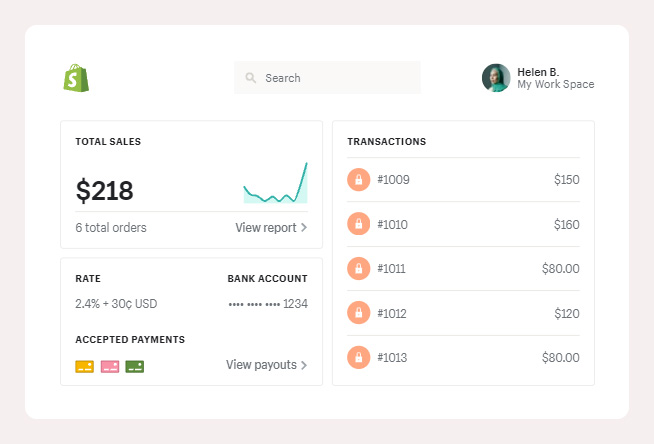
There are two main ways Shopify handles Credit card payments. They are:
Shopify Payments
Shopify Payments is the platform’s built-in credit card payment system that works for select countries globally. Its defining feature is the zero transaction fee charge, making it a convenient option for small and medium scale businesses.
However, credit card rates still apply to Shopify payments. You might have to pay between 2-3% rates on every transaction if you operate from the US. It bears mentioning that the number can be much lower elsewhere in the world.
Some of the countries that support Shopify Payments include:
- Australia
- Austria
- Belgium
- Canada
- Denmark
- Germany
- Hong Kong SAR
- Ireland
- Italy
- Japan
- Netherlands
- New Zealand
- Singapore
- Spain
- Sweden
- United Kingdom
Third-Party Payment Processing
You can use a third-party payment processor with your Shopify account as well. Currently, the platform supports about 100 processors – also known as “payment gateways.” However, Shopify gets to take a 0.5-2% transaction fee depending on your subscription plan.
That means third-party options are more expensive. However, they are the only options if you operate outside the selected countries for Shopify Payments.
What’s it Like to Use Shopify?
You may notice certain activities as you begin to use Shopify. An example is how the platform handles multiple currencies. Shopify allows you to display your store price and checkout details in buyers’ local currencies. The feature can drive up sales over time.
However, this feature will only work if you use Shopify Payments as your payment processor. Also, multi-currency support requires a more expensive plan to work automatically.
Furthermore, Shopify has an “Abandoned Cart Recovery” feature. This feature allows you to reach out to buyers who stopped at the checkout page when shopping online. You can manually view customers who abandoned their carts at checkout or automatically send an email as a part of a reminder to the customer. This way, you can get a better yield.
Overall, “Abandoned Cart Recovery” is an excellent feature to allow you to convert more leads to actual buyers. Thankfully, the function is available to all Shopify pricing tiers.
Also read: Best Cart Abandonment Solution for eCommerce Stores
Using Shopify Pros and Cons
Now that we’ve got past Shopify’s defining features, you’ll want to know how well the platform would suit your new or existing eCommerce project. One of the most effective ways to know that is by understanding the upsides and pitfalls peculiar to the service. You can take the necessary parallels from them for comparison with your business model.
Pros
Shopify is a leading name in the eCommerce industry, and for good reasons. Below are some advantages you’ll get when you start selling on the platform:
● Seamless Operation:
One of the great things about Shopify is how seamlessly it works around your business workflow. It has specific features that handle the store’s technical and complicated areas, leaving you to focus on the more essential aspects of your business operations.
Furthermore, Shopify’s drag-and-drop feature and customizability mean that it requires very minimal technical know-how. That means the service is perfect for people who aren’t tech-savvy.
● Theming and Customizations:
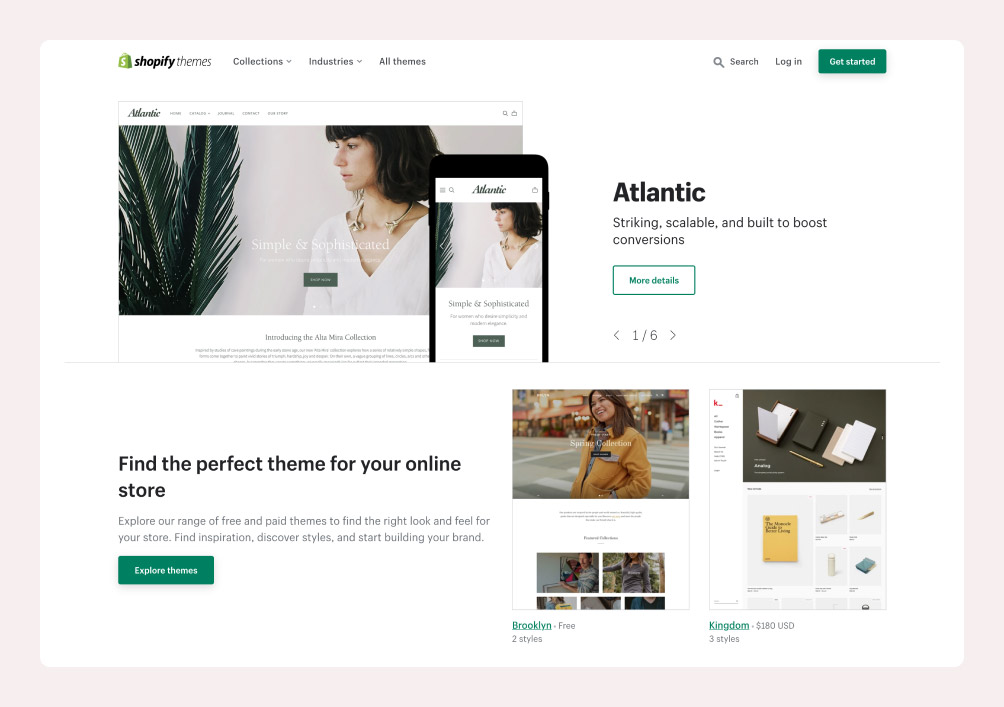
Shopify has numerous theming and customization features that ensure that you make your eCommerce store as appealing to the customers as possible. Themes can help to implement better merchandising techniques as well.
It also means that no two Shopify-hosted online stores look the same, enabling you to stay unique in your market.
There are various themes available to you once you get started on the platform. Some of the theming options are free-to-use, while you’ll have to pay for the others. Also, you get to choose from a broad selection of categories, ranging from art, nature, and food.
● The App Store:
Shopify feels like a full-fledged ecosystem once you begin to use the platform. A massive reason for that is the built-in app store you’ll find within Shopify. The app store is home to over a thousand applets and plugins for your eCommerce business.
Shopify apps allow you to do more on your online store – very much like smartphone applications. You can automate and organize most of your store operations with solutions from the app store. For instance, there’s an app for managing your storefront’s inventory, shipping, accounting, and many more.
You don’t just get app availability on the Shopify App Store. The applications have proper developer support and features, enabling you to meet your specific needs. In addition, Shopify is in partnership with other eCommerce solutions to maintain integration and functionality that benefit their respective user base.
● Quick Marketing Prospects:
You’ll be glad to know that Shopify is an eCommerce tool that allows you to quickly and conveniently market your online store. Nowadays, stores need to leverage Search Engine Optimization (SEO) for a better reach. Shopify has provided robust marketing and SEO tools for that.
With Shopify, you can create discount codes and share your store product links across the internet. The platform also supports SEO keyword generation and data visualization add-ons if you want to know how your marketing campaigns are faring.
● Robust Support:
You must have an eCommerce tool that will help you with your inquiries and issues along the way. Thankfully, Shopify has a dedicated customer support team on hand to support your store. They maintain correspondence over live chats and emails. You can call them as well if you’re in the supported region.
Furthermore, Shopify has a thriving community of other users that might help you on your eCommerce journey. They manage independent online forums where you can ask questions and share ideas as well. It’s a significant advantage, considering that other eCommerce hosting sites might not have it.
Cons
There’s no business without its flaws. Shopify comes with some peculiar pitfalls that you should know to make a balanced buying decision. Let’s go.
● Prohibitive Pricing:
Shopify is by no means a free eCommerce tool to use, but the price you’ve got to pay can be significant. First, you’ll have to pick a subscription plan charged monthly. Then you’ll have to pay for themes, apps, and add-ons from the store.
There’s a transaction fee for every store transaction, except you use the Shopify Payments option instead. Also, you’ll have to pay added charges for the more extensive staff you have got. Overall, the cost accumulates to make Shopify an expensive package to have for your business.
A small and medium-sized business might find the costs a bit prohibitive and need to evaluate how it affects their bottom line in the long run.
● Limited Customization Options:
You’ll have to work with the limited customization options on Shopify. Due to the service’s framework and structure, you can’t get some added custom features even if you tried. That means you might have to consider an alternative or custom programming to get the customization levels you want.
Wrapping Up
Shopify remains a solid recommendation if you’re looking to start your eCommerce business from scratch. It’s convenient, robust, and feature-packed, giving you more headroom to focus on the other aspects of the company.
The Shopify pros and cons, features discussed can help you decide on either getting a Shopify subscription or looking elsewhere for a solution that suits your specific eCommerce needs.
